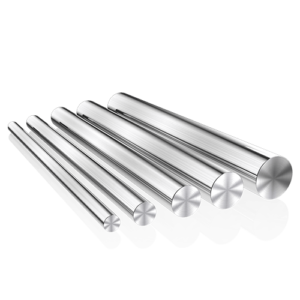Introduction

In the realm of materials engineering, achieving optimal balance between strength and corrosion resistance is a perpetual quest. Among the myriad options available, 303 stainless steel round bars stand out for their remarkable properties and versatility. This blog delves into the intricacies of maximizing strength and corrosion resistance with 303 stainless steel round bars, exploring its composition, fabrication, applications, and more.
Understanding 303 stainless steel round bar
Composition and Properties
303 stainless steel is indeed a remarkable material, prized for its unique combination of properties. As a non-magnetic, austenitic steel, it stands out for its exceptional machinability and commendable corrosion resistance. This versatility stems from its carefully crafted composition, which typically includes chromium, nickel, and sulfur. These elements work in harmony to imbue 303 stainless steel with distinct characteristics that render it ideal for a wide array of applications across diverse industries.
Machinability Advantages
One of the hallmark features of 303 stainless steel is its exceptional machinability. The presence of sulfur enhances chip breaking and tool life, making it a preferred choice for intricate machining operations.
Corrosion Resistance Mechanisms
Despite its machinability, 303 stainless steel maintains commendable corrosion resistance, primarily due to its chromium content. Understanding the mechanisms underlying this resistance is crucial for optimizing its performance in corrosive environments.
Enhancing Strength and Corrosion Resistance
Heat Treatment Techniques
Heat treatment plays a pivotal role in tailoring the mechanical properties of 303 stainless steel. By subjecting it to specific temperature regimes, strength can be enhanced without compromising corrosion resistance.
Surface Treatments and Coatings
Surface treatments such as passivation and coatings offer additional layers of protection against corrosion while augmenting the material’s overall strength. Exploring various treatment options is essential for maximizing performance in diverse applications.
Alloying and Microstructural Refinement
Fine-tuning the alloy composition and microstructure can further enhance both strength and corrosion resistance. Strategic alloying elements and refining techniques contribute to optimizing the material’s properties for specific requirements.
Applications and Case Studies
Industrial Machinery and Equipment
303 stainless steel round bars find widespread use in the manufacturing of industrial machinery and equipment. Case studies highlighting its application in critical components underscore its significance in this domain.
Aerospace and Defense
In aerospace and defense applications, where reliability and performance are paramount, 303 stainless steel demonstrates its mettle. Its combination of strength and corrosion resistance makes it indispensable for aerospace components subjected to harsh environments.
Medical Devices and Instrumentation
The medical industry relies on materials with impeccable biocompatibility and corrosion resistance. 303 stainless steel, with its tailored properties and ease of fabrication, is a preferred choice for surgical instruments and medical devices.
Comparative Properties of Stainless Steel Grades

| Property | 303 Stainless Steel | 304 Stainless Steel | 316 Stainless Steel |
|---|---|---|---|
| Machinability | Excellent | Good | Fair |
| Corrosion Resistance | Good | Excellent | Excellent |
| Strength | Moderate | Moderate | High |
| Weldability | Yes | Yes | Yes |
| Biocompatibility | Varies | Yes | Yes |
FAQ
Q: Can 303 stainless steel round bar be welded?
A:Yes, 303 stainless steel round bar is weldable using common welding techniques such as TIG and MIG welding. However, precautions must be taken to avoid sensitization and subsequent corrosion.
Q: What are the limitations of 303 stainless steel round bar?
A:While versatile, 303 stainless steel round bar has limitations in terms of its strength compared to other stainless steel grades. Additionally, its sulfur content may lead to reduced ductility in certain applications.
Q: How does 303 stainless steel compare to other stainless steel grades?
A:303 stainless steel stands out for its machinability but may exhibit lower corrosion resistance compared to austenitic grades like 304 or 316. It’s essential to evaluate specific requirements to determine the most suitable grade.
Conclusion
In conclusion, maximizing strength and corrosion resistance with 303 stainless steel round bars involves a multifaceted approach encompassing material selection, processing techniques, and application considerations. By leveraging its unique properties and addressing inherent challenges, engineers and manufacturers can harness the full potential of this versatile material across diverse industries.
